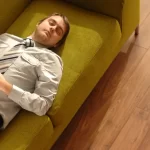Discover the Nervous System Self-Assessment and learn if your energy regulation system needs support
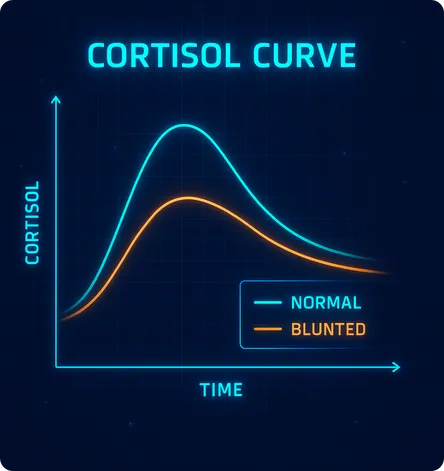
Do You Wake Up Exhausted No Matter How Much You Sleep?
Ask yourself
- Do you drag yourself out of bed already tired, like your night gave you no fuel?
- Do you feel like mornings are the hardest part of your day, your body heavy and sluggish before you’ve even started?
- Do you spend weekends “catching up” on sleep, yet never feel refreshed?
- Do your mornings feel like walking through mud—every step an effort?
If you answered yes, your autonomic nervous system (ANS) may be dysregulated. Instead of allowing restorative sleep, your body stays stuck in stress mode overnight—leaving you drained before the day begins.
Physiological Mechanisms:
- Blunted recovery cycles: Healthy sleep alternates between sympathetic (alert) and parasympathetic (rest) dominance. Fatigue sufferers remain locked in sympathetic dominance, blocking deep restoration.
- Suppressed vagal tone: Low vagus nerve activity means poor heart rate variability (HRV) and inefficient recovery—like your body never shifts into “repair mode.”
- Inflammatory persistence: A stressed nervous system maintains low-grade inflammation that prevents muscle, nerve, and immune recovery while you sleep.
Short sessions of taVNS have been shown to reduce the cortisol response to acute mental stress in controlled studies, and daily use over two weeks improved autonomic balance and aspects of sleep and mood.

Do Afternoon Energy Crashes Control Your Day?
Ask yourself
- Do you reliably hit a wall around 2-3pm, struggling to focus on even simple tasks?
- Do you rely on caffeine or sugar to “push through” afternoons, only to crash harder later?
- Do you feel like your brain fog thickens as the day wears on, conversations and meetings draining you completely?
- Do you cancel evening plans simply because you’re too wiped out?
Physiological Mechanisms:
- Autonomic imbalance: Instead of smoothly shifting between activity and recovery states, your ANS sputters like a faulty engine, draining energy mid-day.
- Mitochondrial suppression: Low vagal tone contributes to oxidative stress and mitochondrial dysfunction—your cells can’t generate sustained energy.
Vagal pathways are central to regulating inflammation. Research shows that taVNS can modulate these signals, supporting recovery and reducing the inflammatory stress that contributes to fatigue.
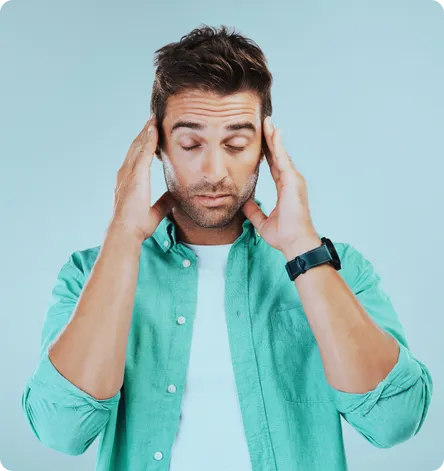
Is Brain Fog Stealing Your Focus and Motivation?
Ask yourself
- Do you reread the same sentence multiple times because nothing sticks?
- Do you forget simple tasks, like why you walked into a room?
- Do you feel mentally drained even when your body is at rest?
- Do you struggle to follow conversations, zoning out mid-sentence?
Physiological Mechanisms:
- Prefrontal cortex under-activation: Fatigue-related nervous system dysfunction dampens the “focus hub” of the brain, impairing concentration.
- Neurotransmitter imbalance: Low vagal tone disrupts dopamine and acetylcholine, chemicals critical for attention and motivation.
- Neuroinflammation: Chronic fatigue is linked to brain inflammation that slows mental processing like a computer running on outdated software.
Clinical research shows taVNS can influence brain networks involved in attention and working memory, with some studies reporting improvements in focus and mental clarity.
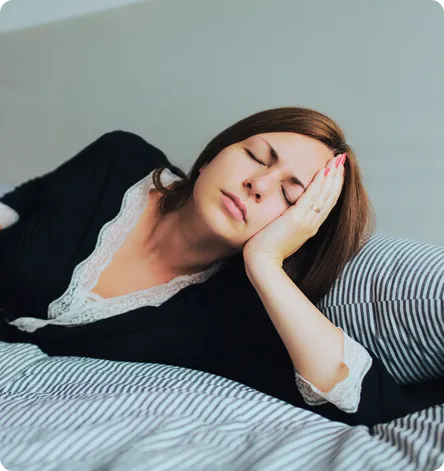
Do You Feel Like Your Body Never Recovers?
Ask yourself
- Do even simple activities—like climbing stairs or grocery shopping—leave you wiped out?
- Do workouts cause you to “crash” for days, instead of energizing you?
- Do your muscles ache and joints feel inflamed even after rest?
- Do you feel like your body has lost its ability to bounce back?
Physiological Mechanisms:
- Autonomic dysfunction: Poor vagus signaling keeps your system stuck in catabolic (breakdown) mode, preventing anabolic (repair) processes.
- Inflammation lock-in: Without vagal activation of the anti-inflammatory reflex, cytokines like IL-6 remain elevated, perpetuating fatigue and pain.
- Recovery system collapse: HRV studies show fatigued individuals lack the parasympathetic surges needed for tissue repair after stress or exertion.
In a randomized clinical trial, taVNS reduced insomnia severity compared with control, suggesting a role in supporting deeper, more restorative sleep.

Is Your Fatigue Affecting Mood and Resilience?
Ask yourself
- Do you feel emotionally flat, detached, or unmotivated?
- Do small stressors feel overwhelming, as though you have no buffer left?
- Do you feel sadness or irritability more often when exhaustion peaks?
- Do you avoid activities you once loved simply because you “don’t have the energy”?
Physiological Mechanisms:
- Vagal-brain communication failure: Poor vagus signaling alters mood-regulating neurotransmitters, fueling depressive or anxious states.
- Energy-emotion feedback loop: Exhaustion magnifies negative thoughts, while low mood further saps energy—a cycle rooted in autonomic imbalance.
- Hippocampal disruption: Chronic fatigue and stress reduce hippocampal volume, impairing both energy regulation and emotional resilience.
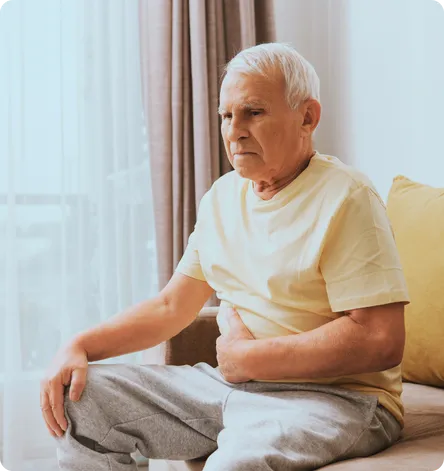
Does Fatigue Disrupt Your Digestion and Immunity?
Ask yourself
- Do you get bloated or uncomfortable after meals, as if your gut can’t keep up?
- Do you experience frequent colds or slow healing from minor illnesses?
- Do you have unpredictable bowel habits, alternating between sluggishness and urgency?
- Do stressful weeks leave your stomach and energy equally wrecked?
Physiological Mechanisms:
- Gut-brain axis dysfunction: Low vagal tone reduces digestive enzyme secretion and gut motility, leaving food poorly digested and nutrients under-absorbed.
- Immune dysregulation: Poor vagus activation blunts anti-inflammatory pathways, leaving the immune system both weak and overactive.
- Microbiome imbalance: Vagal dysfunction contributes to microbiome disruption that worsens fatigue via gut-derived inflammation.
How the Vagus Nerve Is Connected to Sleep Issues
The vagus nerve plays a central role in regulating restorative sleep cycles.
It signals the body to slow the heart rate, calm the stress response, and transition into deep, restorative rest.
When this nerve becomes dysregulated — something increasingly recognized in post-viral conditions — the nervous system can get “stuck” in a state of hyperarousal.
The result is difficulty falling asleep, restless nights, or waking up unrefreshed despite hours in bed. Over time, this lack of quality sleep contributes to persistent fatigue, brain fog, and poor recovery.
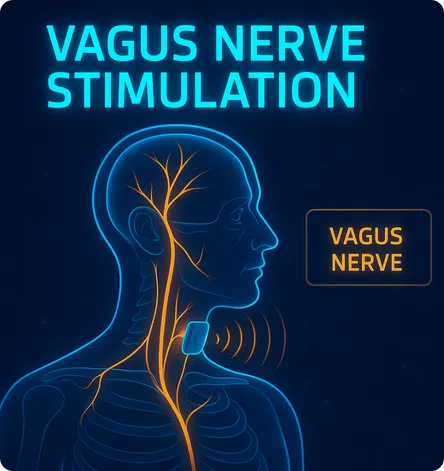
VNS as a Solution to Sleep Issues
This is why researchers are studying non-invasive vagus nerve stimulation (VNS) as a way to support healthier sleep.
By gently stimulating the vagus nerve through the ear, VNS can encourage a shift out of “fight-or-flight” mode and back into the “rest-and-digest” state needed for deep, restorative rest.
Nurosym delivers this approach in a CE-marked home device, designed to be simple and drug-free.
Many users describe the sensation as a light tingling and report more consistent, restorative sleep after regular use — often alongside improvements in daytime energy and mental clarity.
Early pilot studies in post-viral fatigue cohorts also show encouraging signals, with larger clinical trials underway.
Endorsed by Leading Fatigue & Recovery Specialists

Anthony Kaveh, MD
Anesthesiologist & Medical Director at Clarus Health
“I wanted to know if we could help patients escape exhaustion from an out-of-control nervous system. So far, the answer is yes.”
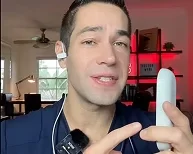
Dr Myro Figura
Anesthesiologist & Chief Medical Officer at HealFast
“(Nurosym) increases the rest-and-repair side of your nervous system—an important tool for restoring energy.”

Dr James Gill
Associate Professor at Warwick Medical School & General Practitioner
“Independent research at Leeds University demonstrated reduced sympathetic nerve activity. Personally, my HRV increased from the 40s to 69 with Nurosym.”

Bryan Johnson
Founder of Braintree, Project Blueprint
“In five months, my HRV improved from 37 ms to 54 ms. HRV is a major biomarker of resilience, recovery, and aging.”
Real Results from Real People
“After years of exhaustion, I feel my energy slowly returning. I finally enjoy my weekends again.”
– Kate
“From post-viral dysautonomia, I finally got a foothold out of exhaustion.”
– Sarit
“After my first session, my anxiety lifted and my energy noticeably improved. Within weeks, I could exercise again without crashing.”
– Post-COVID user
“From constant crashes to fewer ‘rough days’—the difference was immediate.”
– POTS sufferer
Meet The Doctors
A practicing doctor of psychiatry, Elisabetta has an MBA from INSEAD Business School, and experience in direct patient care, neuroscience research, communication and management. Dr. Burchi is a physician-scientist, working with Parasym in clinical affairs with a track record of publishing in the most important scientific journals such as The Lancet, writing successful grant proposals for the NIH, and leading the production of editorial, clinical, regulatory and promotional material in collaborative multidisciplinary teams. Dr. Burchi has also coordinated clinical trials and implemented a tele-medicine practice which received a certification of excellence among more than 100,000 professionals.

Dr. Elisabetta Burchi, MD, MBA
Translational research lead at Parasym
Take Control of Your Fatigue Naturally

Join thousands who’ve reclaimed their energy naturally.
Participate in the fatigue recovery research study and save €40 on your Nurosym device.
*Research participation assessment takes less than 3 minutes
50+
Clinical studies referenced
4M+
Sessions delivered
30
Day money back guarantee
![]()
certified medical device

Join thousands who’ve reclaimed their energy naturally.
Participate in the fatigue recovery research study and save €70 on your Nurosym device.
*Research participation assessment takes less than 3 minutes
50+
Clinical studies referenced
4M+
Sessions delivered
30
Day money back guarantee
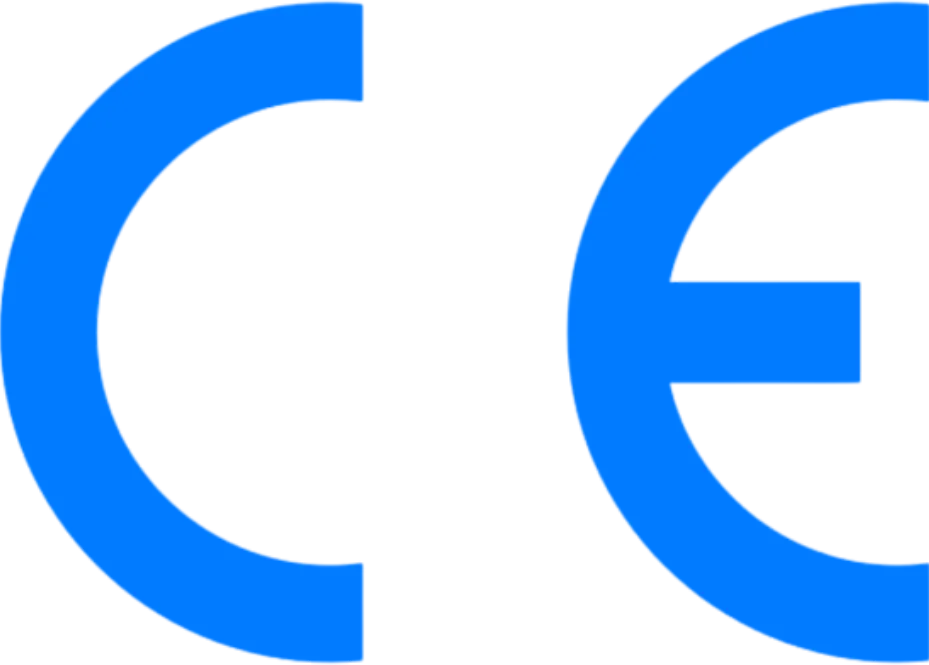
certified medical device
30-Day Money-Back Guarantee
Every Nurosym Kit is backed by a 30-day, full-refund policy if users aren’t satisfied with their progress.
Got questions? Here is everything you need to know
Symptoms we studied
These symptoms have been linked to autonomic nervous system imbalance and Vagus Nerve Impairment:
- Anxious states and Stress related symptoms
- Chronic Tiredness, Fatigue, Brain Fog, Burnout
- Digestive issues, irritable gut reflux, diarrhoea, constipation, bloating
- Sleep problems
- Negative thought
- Inflammatory symptoms
- Pain, headaches
- Memory & Attention problems
- Postural Heart Rate Abnormalities or fainting
- Post-Viral Symptoms
- Widespread body pain
Our latest research data also suggests Nurosym improves learning and short-term memory and cognition.
Nurosym also has been shown to promote relaxation, mood, sleep, healthy digestion, increased HRV, as well as to alleviate symptoms of stress, burnout, adrenal fatigue.
Parasym research is also investigating the impact of neuromodulation on athletic performance, muscle recovery, weight management problems, substance dependency and more.
If you’re not sure if Nurosym is for you consult with your health professional.
When can I start feeling the effects?
The timeframe for experiencing the effects of Nurosym varies. Individuals with severe symptoms may notice improvements within 1 to 3 days, while others may see results within 4 to 6 weeks. Rest assured, the transformative benefits of Nurosym will be within reach.
Is Nurosym safe?
Neuromodulation via Nurosym is considered safe when used as intended.
Nurosym has these certificates.
– It is based on scientific evidence
– It is safe to use
– It has demonstrated scientific efficacy
Be sure to read the important safety information before use. Thousands of users have tested the device and no serious adverse effects have been reported in studies to date.
What does it feel like?
Feels like a pleasant, light vibration or tingling sensation in your ear.
Are there any additional costs or subscription fees?
There are no additional costs or fees, only the one-time purchase of the Nurosym.
Before using Nurosym
Read the instructions for use before using Nurosym. However, it’s possible this may not be enough to fully explain the safe and effective use of Nurosym in your particular situation. Ask your health professional or contact Nurosym care if you have any questions about how to use Nurosym or require any further clarification.
Only use Nurosym as described in the instructions for use or as otherwise directed by your health professional. Remove jewelry that may interfere with the electrode location (earrings etc.) before using Nurosym. Do not use Nurosym if the skin on the tragus is broken, cracked or numb.
What is the difference between Nurosym and other devices claiming to stimulate nervous system?
Important Safety Note: Exposing the nervous system to untested electrical currents or using DIY Transcutaneous Electrical Nerve Stimulation (TENS) devices carries risks, including potential nerve damage. Prioritize safety and efficacy in your choice.
Devices claiming to affect vagus nerve differ significantly, impacting their effectiveness and safety. Even small differences in factors like waveform and site placement can yield notable results. Most importantly, level of scientific evidence is crucial.
Nurosym is the leading non-invasive vagal neuromodulation system used in scientific research– with over $10M deployed in scientific studies, 50+ published papers in leading journals covering our exciting and scientifically significant results. Their device is one of a few registered medical devices with safety & efficacy confirmed by regulatory bodies in EU.
How long should I use Nurosym each day for optimal results?
They recommend using Nurosym for 1 hour each day, however, benefits can be seen with as little as 15 minutes of use.
Can I perform other activities while using it?
Yes, you can experience the benefits of Neurostimulation anywhere, anytime while doing any activity.
Do I need a prescription to purchase Nurosym?
No. However, they recommend that you consult with your health professional if you’re unsure whether Nurosym is right for you.
What are the details of your 30-day guarantee?
If you try Nurosym daily for 30 days and aren’t happy with your results, they’ll send you a fund refund. No questions asked.
Given the remarkable results Nurosym has had in scientific studies and with their customers around the world, they’re confident in its health restoring effects. Their goal will always be to restore your collective health – restoring health for as many people as they can and in turn, restoring the health of our planet. If Nurosym doesn’t work for you for any reason, they’re happy to send you a refund. This refund period is available 30 days after the date of purchase and expires the following week (37 days after the date of purchase).
Does Nurosym come with a warranty?
Yes! They offer a one-year warranty with every Nurosym device.
How long do orders take to ship?
Orders are processed and dispatched within 1-3 business days.
When will my order arrive?
Nurosym is shipped via priority tracked and signed couriers, so delivery times will vary based on shipping location. When you checkout, you’ll receive an estimated shipping time for your order.
What is in the Nurosym Package?
- Nurosym device
- Earpiece
- USB charger
- Case
- Quick start guide
How to use Nurosym?
REFERENCES:
- Chakraborty, P., Farhat, K., Morris, L., Whyte, S., Yu, X., & Stavrakis, S. (2023). Non-invasive vagus nerve stimulation in postural orthostatic tachycardia syndrome. Arrhythmia & Electrophysiology Review, 12, e31. https://doi.org/10.15420/aer.2023.20
- Diedrich, A., Urechie, V., Shiffer, D., Rigo, S., Minonzio, M., Cairo, B., Smith, E. C., Okamoto, L. E., Barbic, F., Bisoglio, A., Porta, A., Biaggioni, I., & Furlan, R. (2021). Transdermal auricular vagus stimulation for the treatment of postural tachycardia syndrome. Autonomic Neuroscience, 236, 102886. https://doi.org/10.1016/j.autneu.2021.102886
- Geng, D., Liu, X., Wang, Y., & Wang, J. (2022). The effect of transcutaneous auricular vagus nerve stimulation on HRV in healthy young people. PLOS ONE, 17(2), e0263833. https://doi.org/10.1371/journal.pone.0263833
- Kim, A. Y., Marduy, A., de Melo, P. S., Gianlorenço, A. C., Kim, C. K., Choi, H., Song, J.-J., & Fregni, F. (2022). Safety of transcutaneous auricular vagus nerve stimulation (taVNS): A systematic review and meta-analysis. Scientific Reports, 12, 22055. https://doi.org/10.1038/s41598-022-25864-1
- Stavrakis, S., Chakraborty, P., Farhat, K., Whyte, S., Morris, L., Asad, Z. U. A., Karfonta, B., Anjum, J., Matlock, H. G., Cai, X., & Yu, X. (2024). Noninvasive vagus nerve stimulation in postural tachycardia syndrome: A randomized clinical trial. JACC: Clinical Electrophysiology, 10(2), 346–355. https://doi.org/10.1016/j.jacep.2023.10.015
- Zheng, Z. S., Simonian, N., Wang, J., & Rosario, E. R. (2024). Transcutaneous vagus nerve stimulation improves Long COVID symptoms in a female cohort: A pilot study. Frontiers in Neurology, 15, 1393371. https://doi.org/10.3389/fneur.2024.1393371
- Kim, H.-G., Cheon, E.-J., Bai, D.-S., Lee, Y. H., & Koo, B.-H. (2018). Stress and heart rate variability: A meta-analysis and review of the literature. Psychiatry Investigation, 15(3), 235-245. https://doi.org/10.30773/pi.2017.08.17 – This meta‐analysis highlights how diminished HRV (reflecting lower vagal tone) is associated with chronic stress and fatigue outcomes, supporting the article’s link between poor autonomic regulation and fatigue.
- Michels, N., Sioen, I., Boone, L., Bammann, K., Fernández‐Alvira, J. M., Vyncke, K., … & Huybrechts, I. (2013). Longitudinal associations between systemic inflammation and HRV in children: The LISAplus study. Brain, Behavior, and Immunity, 27(1), 102-109. https://doi.org/10.1016/j.bbi.2012.07.018 – This study supports the article’s claim that reduced vagal (parasympathetic) activity is linked to elevated inflammation (a contributor to fatigue). It shows inflammation ↔ HRV associations over time.
- Heathers, J. A. J., Goodwin, P., Kelly, O., & Livingstone, S. (2021). Exhaustion symptoms and heart rate variability: Testing the direction of prediction. Scientific Reports, 11, 13406. https://doi.org/10.1038/s41598-022-14743-4 – This study directly links fatigue/exhaustion symptoms with lower HRV (vagal dysfunction), supporting the article’s idea that impaired vagal tone underlies chronic fatigue states
- Laborde, S., Mosley, E., & Thayer, J. F. (2017). Heart rate variability and cardiac vagal tone in psychophysiological research – Recommendations for experiment planning, data analysis, and data reporting. Frontiers in Psychology, 8, 213. https://doi.org/10.3389/fpsyg.2017.00213 – This review emphasizes HRV as a valid marker of vagal tone and describes how vagal regulation underpins fatigue, stress, and recovery—key to the article’s premise about beating fatigue via improved vagal tone.
- Lehrer, P., & Gevirtz, R. (2014). Heart rate variability biofeedback: How and why does it work? Frontiers in Psychology, 5, 756. https://doi.org/10.3389/fpsyg.2014.00756 – This article explains how interventions like slow breathing and HRV biofeedback improve vagal tone and thus reduce symptoms like fatigue and low energy—aligning with the article’s “journey beyond sleep & supplements”.
The article does not in any way constitute as medical advice. Please seek consultation with a licensed medical professional before starting any treatment. This website may receive commissions from the links or products mentioned in this article.
Share via:


